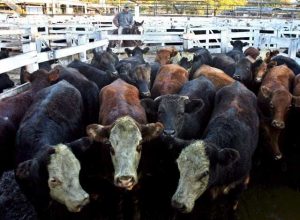Enterohaemorrhagic Escherichia coli (EHEC), like E. coli O157:H7 are frequently detected in bovine faecal samples at slaughter. Cattle do not show clinical symptoms upon infection, but for humans the consequences after consuming contaminated beef can be severe.
The immune response against EHEC in cattle cannot always clear the infection as persistent colonization and shedding in infected animals over a period of months often occurs. In previous infection trials, we observed a primary immune response after infection which was unable to protect cattle from re-infection. These results may reflect a suppression of certain immune pathways, making cattle more prone to persistent colonization after re-infection.
To test this, RNA-Seq was used for transcriptome analysis of recto-anal junction tissue and ileal Peyer’s patches in nine Holstein-Friesian calves in response to a primary and secondary Escherichia coli O157:H7 infection with the Shiga toxin (Stx) negative NCTC12900 strain. Non-infected calves served as controls.
In tissue of the recto-anal junction, only 15 genes were found to be significantly affected by a first infection compared to 1159 genes in the ileal Peyer’s patches. Whereas, re-infection significantly changed the expression of 10 and 17 genes in the recto-anal junction tissue and the Peyer’s patches, respectively. A significant downregulation of 69 immunostimulatory genes and a significant upregulation of seven immune suppressing genes was observed.
Although the recto-anal junction is a major site of colonization, this area does not seem to be modulated upon infection to the same extent as ileal Peyer’s patches as the changes in gene expression were remarkably higher in the ileal Peyer’s patches than in the recto-anal junction during a primary but not a secondary infection. We can conclude that the main effect on the transcriptome was immunosuppression by E. coli O157:H7 (Stx−) due to an upregulation of immune suppressive effects (7/12 genes) or a downregulation of immunostimulatory effects (69/94 genes) in the ileal Peyer’s patches. These data might indicate that a primary infection promotes a re-infection with EHEC by suppressing the immune function.
Potential immunosuppressive effects of Escherichia coli O157:H7 experimental infection on the bovine host
BMC Genomics; 2016; 17:1049; DOI: 10.1186/s12864-016-3374-y; Published: 21 December 2016
E. Kieckens, J. Rybarczyk, R. W. Li, D. Vanrompay, and E. Cox
http://bmcgenomics.biomedcentral.com/articles/10.1186/s12864-016-3374-y

